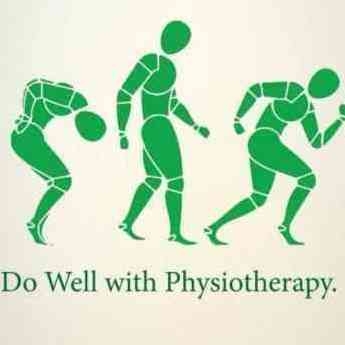+918042754929

This is your website preview.
Currently it only shows your basic business info. Start adding relevant business details such as description, images and products or services to gain your customers attention by using Boost 360 android app / iOS App / web portal.
#Sternocleidomastoid_pain or #syndrome Sternoclei...
#Sternocleidomastoid_pain or #syndrome Sternocleidomastoid pain causes SCM pain can have a number of causes that are often related to some type of muscle tension. Tightness in another part of your body can cause referred pain in your SCM. It can also become tight and shortened from repeated activities such as: bending forward to type looking down at your phone turning your head away from center while using a computer Causes of SCM pain can include chronic health conditions such as asthma and infections such as sinusitis and the flu. Other causes of SCM pain include: bronchitis injuries such as whiplash or falls overhead work such as painting, carpentry, or hanging curtains pneumonia poor posture, especially when your head is forward or turned to the side shallow chest breathing sleeping on your stomach with your head turned to one side sudden movements tight chest muscles tight shirt collar or tie Sternocleidomastoid pain symptoms You can feel SCM pain in a few different ways. Your neck, shoulders, or upper back may be especially sensitive to touch or pressure. You may experience pain in your sinuses, forehead, or near your eyebrows. Dull, aching pain may be accompanied by feelings of tightness or pressure. Turning or tilting your head may cause sharp pain. More serious injuries may involve swelling, redness, and bruising. Muscle spasms may also occur. You may have some of the following symptoms: difficulty holding up your head disorientation dizziness or imbalance muscle fatigue nausea pain in your jaw, neck, or back of your head pain in your ear, cheek, or molars ringing in your ears scalp irritation stiffness tension or migraine headache unexplained tears visual disturbances such as blurred vision or light appearing dimmed Sternocleidomastoid pain exercises and stretches Set aside at least 15 minutes per day to do some type of simple stretches or yoga poses. Here are a few examples to get you started. Neck rotations Head tilts Upward planks Small adjustments to relieve sternocleidomastoid pain Posture and ergonomics Treatment may be as simple as making changes to your posture, especially if you work or do certain activities in a position that causes pain. You may change the position of your chair or desk and use a headset instead of holding a phone between your ear and shoulder. Clothing and sleep comfort Make sure you have enough room in the neck of your shirts and ties. Consider wearing a neck brace while you sleep to keep your neck in the correct position. You can place a rolled towel under your neck to support the curve at the base of your skull. Massage Consider getting a massage as often as once per week. This may help relieve muscle tension and stress, though the results may only be short-term. You can even do self-massage on your head, neck, and shoulders for 10 minutes per day. You might also use alternative therapies such as chiropractic acupuncture. Heat or cold packs Hot and cold therapies are a simple option to treat pain at home. This may help relieve swelling, relax muscles, and reduce pain. Apply an ice pack or heating pad to the affected area for 20 minutes a few times throughout the day.

